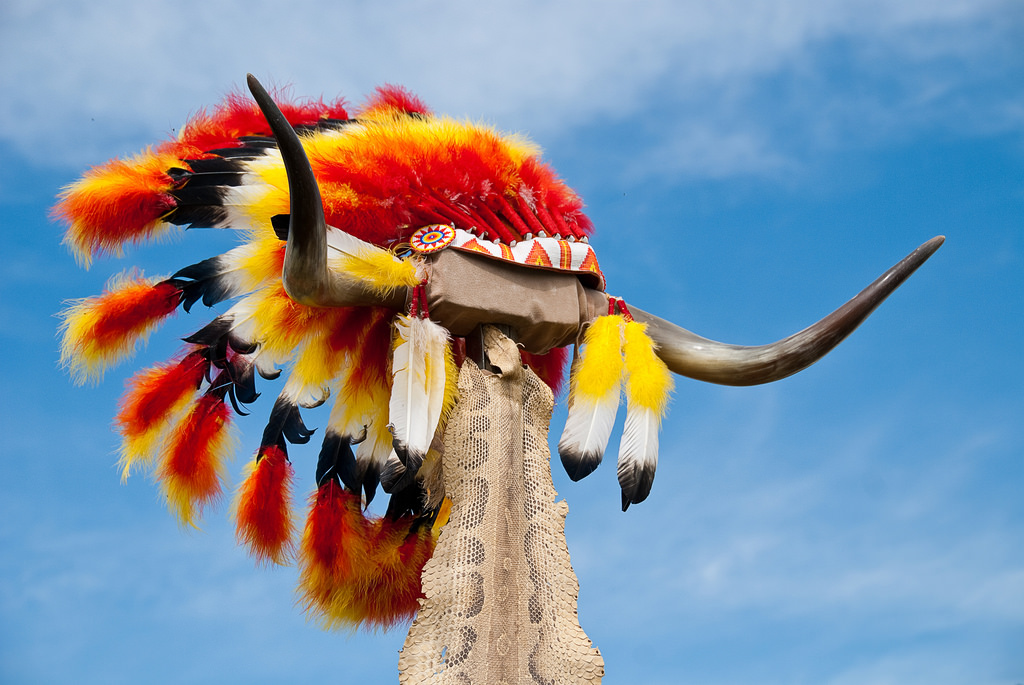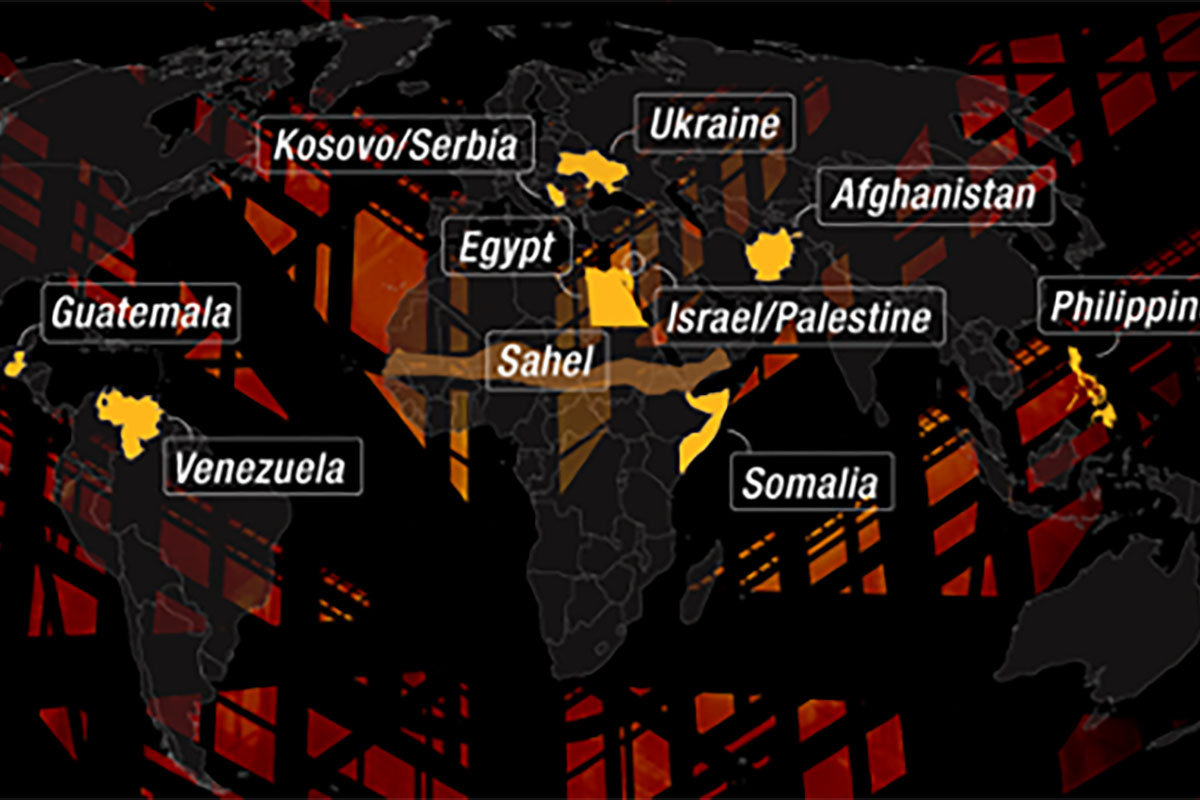“Privilege can lead to cultural appropriation”
January 5Debate today continues around cultural appropriation – what it is, and whether it is different from cultural appreciation. Hana Syed, 21, a Correspondent from Toronto, Canada, writes that it is important to understand and highlight the differences between the two concepts.
Cultural appropriation is adopting and profiting from elements from a culture outside of one’s own. These elements include the behaviour, ideas, traditions, aesthetics, and material objects that are associated with a cultural group.
Importantly, cultural appropriation is systemic, where cultural elements are adopted in a colonial manner. It exists and is maintained through leaders and corporations that profit from the production and selling of goods from other groups’ cultures, and is not the same as cultural appreciation. Furthermore, it is important to recognise that cultural appropriation is rooted in white privilege and systemic oppression – for example, through corporations – while cultural appreciation is not. It is however, individual acts that support the existing systems of domination and subordination.
Cultural appreciation pertains to the individual. Unlike cultural appropriation, appreciation is not systemic. However, it may include the individual act of purchasing culturally appropriated goods as an attempt to indicate one’s appreciation for another culture – specifically the cultural aesthetic. Cultural appreciation recognises the individual as a consumer who chooses to embrace fragments of other cultures as an attempt to display their appreciation for human diversity, albeit naively. By doing so, the individual arguably inadvertently supports the maintenance of existing systems of oppression, dominance, and subordination. Culturally appropriated goods are ones that profit people or corporations who do not identify with the culture from which the goods originate. Interestingly, most of these goods are circulated in the “Western” world to be purchased by its predominantly white population.
To fully understand cultural appropriation, one must also understand white privilege. White privilege systemically advantages white people through greater access to power and resources in comparison to people of colour. Thus, many freedoms that are experienced as natural in Caucasian-dominant societies are actually racially-gifted privileges. This privilege continues to exist through dominance in political, economic, and cultural realms that create power dynamics which deem ethnic minorities as subordinate. In cultural appropriation scenarios, people and corporations choose to participate in only a select number of elements from a minority culture. In doing so, the significance of these cultural elements is often lost and reduced to a simple aesthetic or fashion statement.
The reduction of cultural significance to mere aesthetics is exemplified by the cultural exploitation of Indigenous communities. Due to the colonisation of America’s First Nations people and their land by Western Europe, these minority communities have become subordinate in comparison to their white counterparts. In colonised countries such as Canada, the hegemonic racial identity is that of the colonisers – white. In addition to the creation of systemic barriers that prevent the agency of Indigenous people, political and corporate powers view their traditions as ‘exotic’. This is achieved through corporate production and selling of their traditional goods. For example, the commodification of traditionally indigenous artifacts such as head dresses and dream catchers in the design of clothing by western fashion corporations exploits spiritual and traditional practices of Indigenous peoples.
Essentially, non-First Nations people and corporations are capitalising on interest in the exotic aspect of the traditions of the continent’s First Nation – their clothing, items, and rituals. Within the western world, predominantly white countries’ consumers are purchasing these items and wearing them as fashion items in public spaces such as music festivals. However, as members of the dominant society they have the privilege of ‘participating’ in a select number of cultural elements without having to experience the oppression associated with its people.
Through this, they disrespectfully ignore the values and beliefs incorporated with Indigenous traditions, rituals, and other cultural elements. In doing this, people outside of Indigenous communities are displaying superficial love for Indigenous culture while supporting the existing system of domination and subordination – one that is not favourable to First Nations people. Without being provided any sort of reconciliation, their oppressors continue to exploit and profit from Indigenous culture and people.
It is important to understand cultural appropriation as separate from cultural appreciation. People must recognise that individuals, groups of people, and corporations have key roles in maintaining the existing system of domination and subordination. Thus, individuals must be cautious in their role as consumers or as they attempt to display appreciation for another culture, for they may support corporations that are appropriating and continuing to socially and economically benefit from historical colonialism.
In being actively aware of the association between privilege and cultural appropriation, individuals can be made aware of their own actions and sensitive to other cultures. It is imperative that people navigate the world with respect for other cultural traditions and people, especially when living in multicultural societies such as Canada. Having a proper understanding of cultural diversity allows people to both communicate and interact with one another respectfully.
photo credit: Chris_Parfitt Native American Headdress via photopin (license)
…………………………………………………………………………………………………………………
About: I am an undergraduate student in neuroscience and psychology at the University of Toronto. I am a singer/song-writer, activist, and motivational speaker. I was a featured TEDx Speaker for my talk on identity, and together with my siblings perform professionally in the band, DEYS (YouTube: DEYSofficial). With my siblings I also founded the non-profit organization, Global Youth Impact (GYI), which empowers young people as leaders and change-makers within their communities and around the world.
Reach me on Twitter @GlobalYouthImp or connect online at https://www.facebook.com/gyi.globalyouthimpact/
…………………………………………………………………………………………………………………
Opinions expressed in this article are those of the author and do not necessarily represent the views of the Commonwealth Youth Programme. Articles are published in a spirit of dialogue, respect and understanding. If you disagree, why not submit a response?
To learn more about becoming a Commonwealth Correspondent please visit: http://www.yourcommonwealth.org/submit-articles/
…………………………………………………………………………………………………………………





